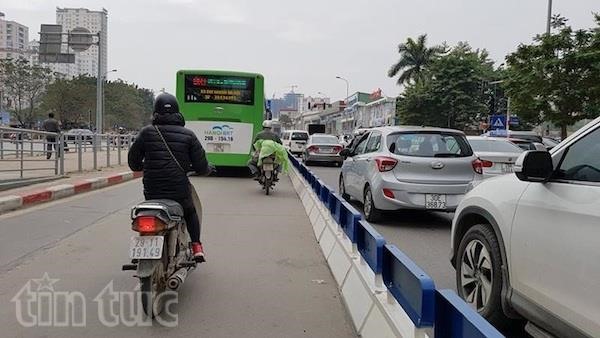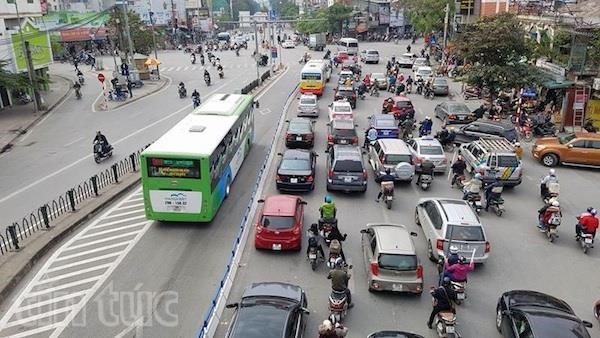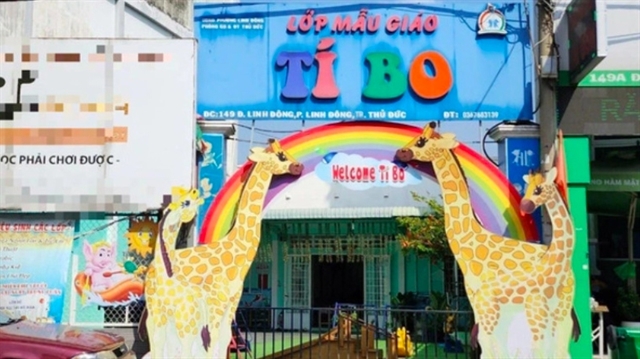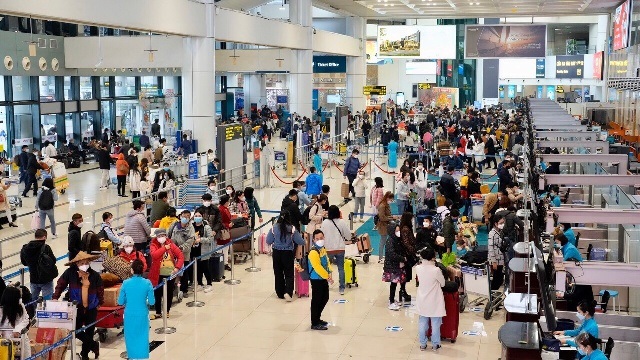.jpg) Society
Society

As lane markings for the city’s bus rapid transit (BRT) routes have proved futile, the city’s department of transportation has stepped up efforts by installng physical barriers. The attempt is to "clear the way" for BRT buses to run freely, without worrying about swarm of motorcycles and cars obstructing them.
 |
| Even when barriers are erected, some motorcyclists still encroach on the designated BRT lane. - Photo baotintuc.vn |
HÀ NỘI — As lane markings for the city’s bus rapid transit (BRT) routes have proved futile, the city’s department of transportation has stepped up efforts by installng physical barriers. The attempt is to "clear the way" for BRT buses to run freely, without worrying about swarm of motorcycles and cars obstructing them.
“In reality, when there are barriers clearly separating the BRT route and other carriageways, the BRT can run at higher speed, which means travel time will be reduced and the frequency on each route will be increased,” Nguyễn Thanh Lâm, a bus driver told Tin Tức (News) newspaper.
Buses running on roads with physical barriers installed faced fewer issues in comparison with those travelling on roads with just lane markings.
While most cars travelled on designated carriageways, many motorbike drivers, on the other hand, continued to wilfully ignore the signs and drive in the BRT lane, particularly behind buses or when the lane was empty.
Nguyễn Trọng Nghĩa, a bus passenger, said while the physical barriers would certainly prevent other vehicles from entering the bus lane, it would worsen traffic jams, especially during the rush hour. However, he added that if road users rigorously observed traffic signals, allowing the BRT to run easier, then more people would be convinced to use public transport.
The city’s transportation authority, meanwhile, seems to believe installing physical barriers is a step in the right direction.
Nguyễn Hoàng Hải, director of the Hà Nội Centre of Urban Transport Management and Operation, said following the installation of the physical barriers, the number of vehicles trespassing in the BRT lane had dipped drastically, improving efficiency and ensuring shorter arrival time of buses.
In addition, he said, the physical barriers could be easily moved, helping prevent errant vehicles from colliding with BRT buses. — VNS
74961202PM.jpg) |
| Without barriers, the BRT lane is trespassed by scores of other vehicle users. - Photo baotintuc.vn |
 |
| With a clearly defined lane, BRT buses can run smoothly and arrive to destinations in shorter time. - Photo baotintuc.vn |
68461202PM.jpg) |
| 200 metres of median barriers from bus shelters to Giảng Võ - Láng Hạ intersection to separate BRT lane from other carriageways. - Photo baotintuc.vn |



.jpg)




.jpg)
